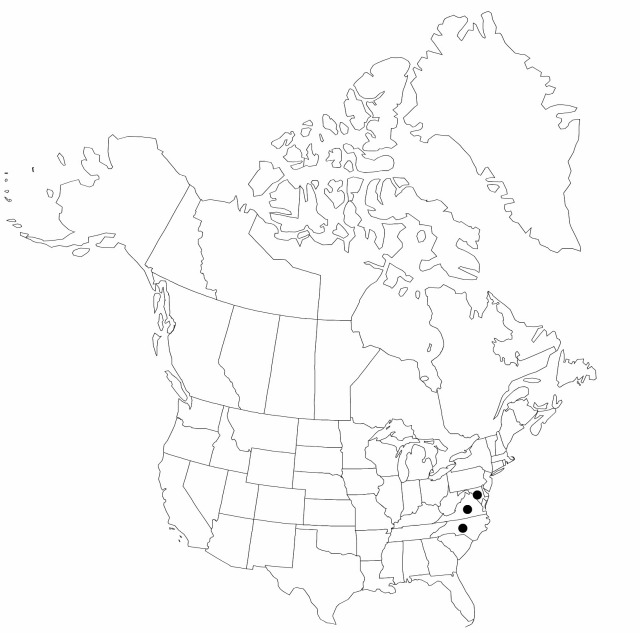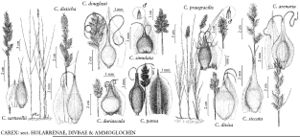Carex divisa
Fl. Angl., 348. 1762.
Rhizomes coarse, 1.9–3.5 mm thick, typically with long, unbranched segments from which shoots arise singly every few nodes. Culms sharply trigonous, (15–) 25–65 (–80) cm, scabrous-angled distally. Leaves: basal sheaths brown; sheaths with hyaline inner band, apex not prolonged, glabrous; ligules 0.5–1.5 mm; blades 1.1–3 mm wide. Inflorescences elongate, 1–3.5 cm; spikes 3–10 (–15), androgynous, ovoid. Pistillate scales reddish-brown, with narrow hyaline margins, ovate, acute to acuminate-awned, dull. Anthers 1.9–3.1 mm, apiculus bristly hairy (30X). Perigynia reddish-brown, faintly to strongly veined on both sides, usually stipitate, broadly ovate, thickly planoconvex, 3–4.3 × 1.8–2.4 mm, shiny; beak 0.6–0.9 mm, 1/5–1/4 length of body, oblique to bidentulate. 2n = 58, 60.
Phenology: Fruiting May–Jun.
Habitat: Wet shores and marshy areas in freshwater habitats near the coast
Elevation: 0–10 m
Distribution

Introduced; Md., N.C., Va., Eurasia, New Zealand
Discussion
Carex divisa was first recorded in North America in 1933 (S. F. Blake 1934); it was also introduced into New Zealand.
Selected References
None.
Lower Taxa
"shortened" is not a number.
